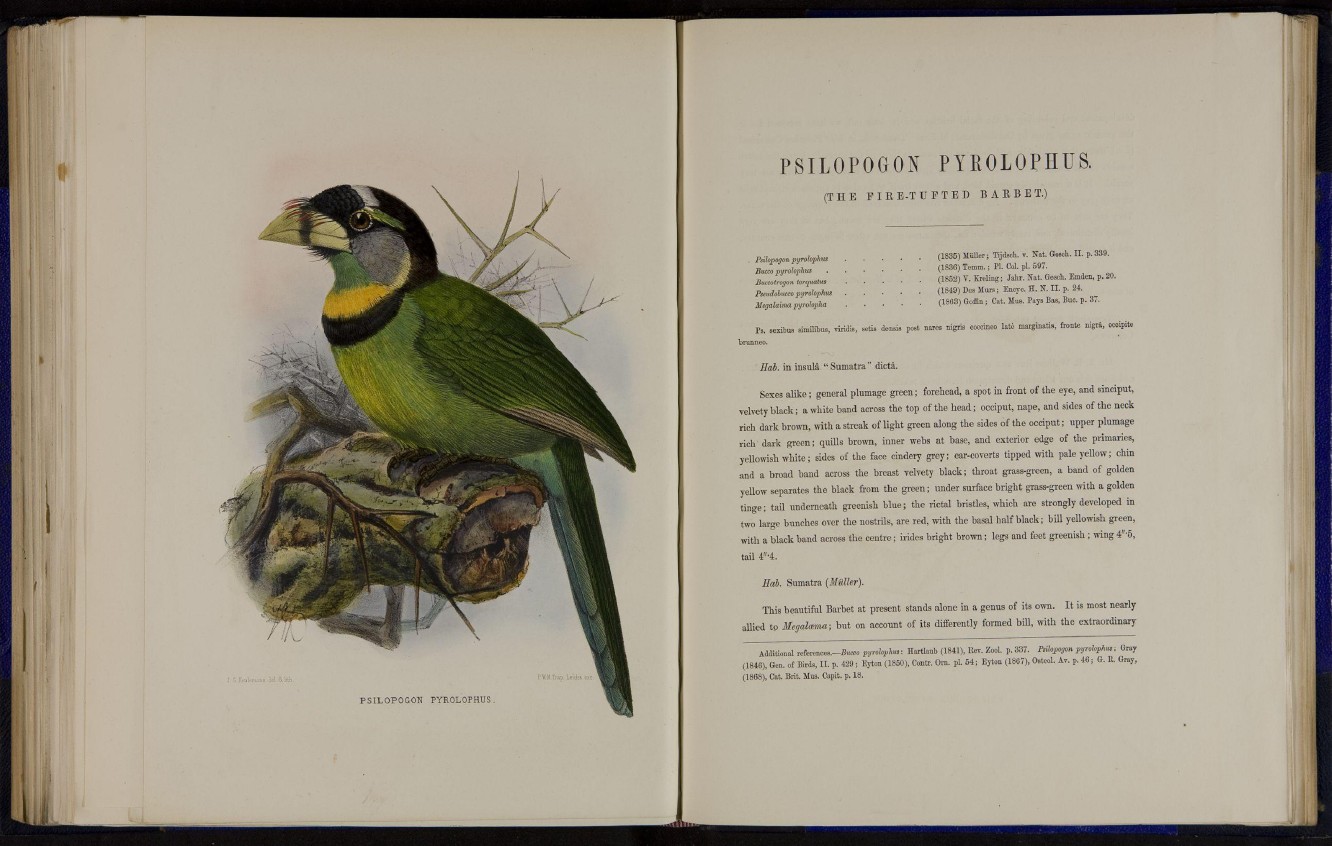
PSILOPOGON PYROLOPÏÏÏÏS.
( T H E E I R E - T U F T E D B A R B E T .)
Psilopogonpyrokphus (1835) Müller; Tijdsch. v. Nat. Gesch. II. p. 339.
ßJopyrolophus (1836) Temm.; PI. Col. pl. 597.
Buccotrogon testatus (1852) V. Kreling; Jahr. Nat. Gesch. Emden, p. 20.
Pseudobucco pyrohphus (1849) Des Murs; Encyc. H. N. II. p. 24.
Megalaima pyrolapha (1863) Geffin ; Cat. Mus. Pays Bas, Buc. p. 3 , .
Ps. scxibus similibus, Tiridis, sctis densis post nares nigris coccineo late marginatis, fronte nigra, occipitc
brunneo.
Hab. in insula " Sumatra " dicta.
Sexes a l i k e ; general plumage green; forehead, a spot in front of the eye, and sinciput,
velvety black; a white band across the top of the head; occiput, nape, and sides of the neck
rich dark brown, with a streak of light green along t h e sides of the occiput; upper plumage
rich dark green; quills brown, inner webs at base, and exterior edge of the primaries,
yellowish white; sides of the face cindery grey; ear-coverts tipped with pale yellow; chin
and a broad band across the breast velvety black; throat grass-green, a band of golden
yellow separates the black from the green; under surface bright grass-green with a golden
tinge; tail underneath greenish blue; the rictal bristles, which are strongly developed in
two large bunches over the nostrils, are red, with the basal half black; bill yellowish green,
with a black band across the centre; irides bright brown; legs and feet greenish; wing 4"-5,
tail 4"-4.
Hab. Sumatra (Midler).
This beautiful Barbet at present stands alone in a genus of its own. It is most nearly
allied to Megalama; but on account of its differently formed bill, with the extraordinary
Additional references.—Bucco pyrolophus: Hartlaub (1841), Rev. Zool. p. 337. Psilopogon pyrohjihus: Gray
(1846), Gen. of Birds, II. p. 429; Eyton (1850), Contr. Orn. pl. 54; Eyton (1867), Osteol. Av. p. 4 6 ; G. R. Gray,
(1868), Cat. Brit. Mus. Capit. p. 18.